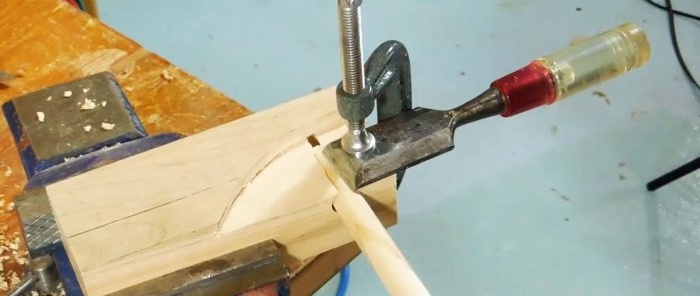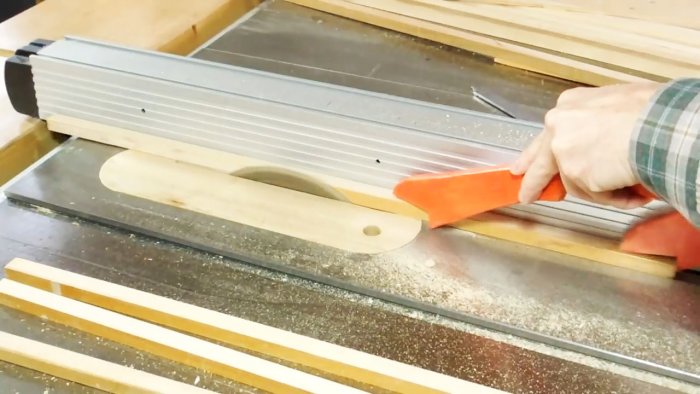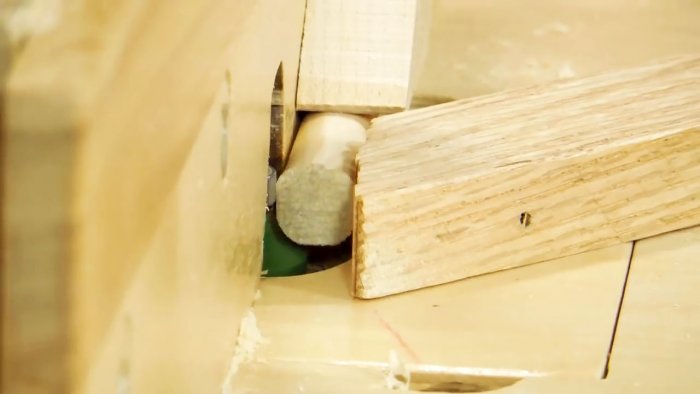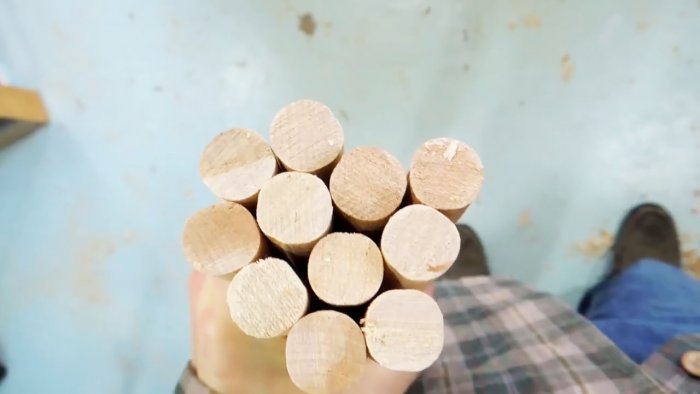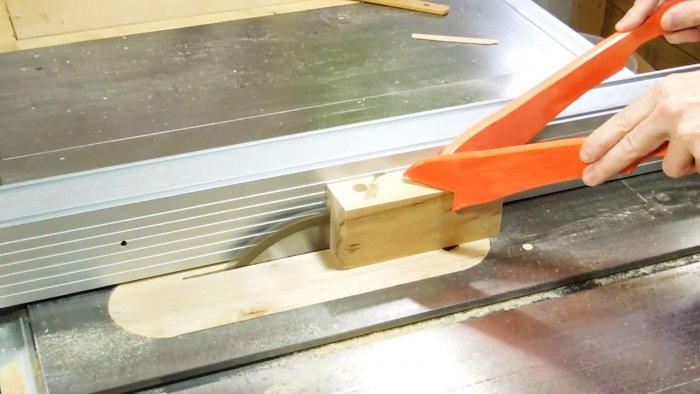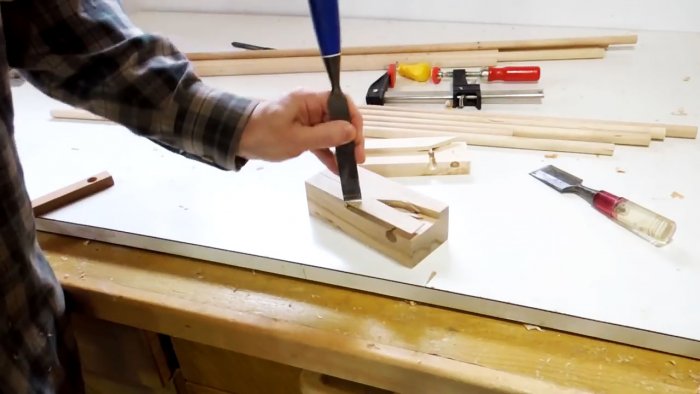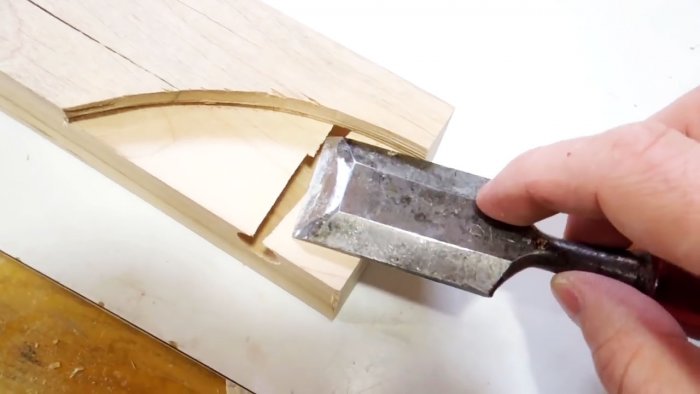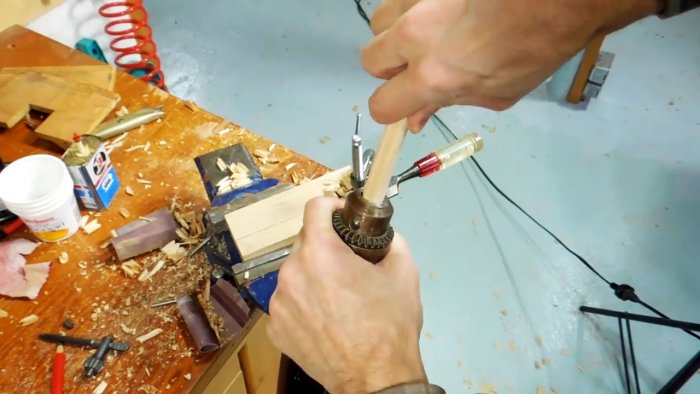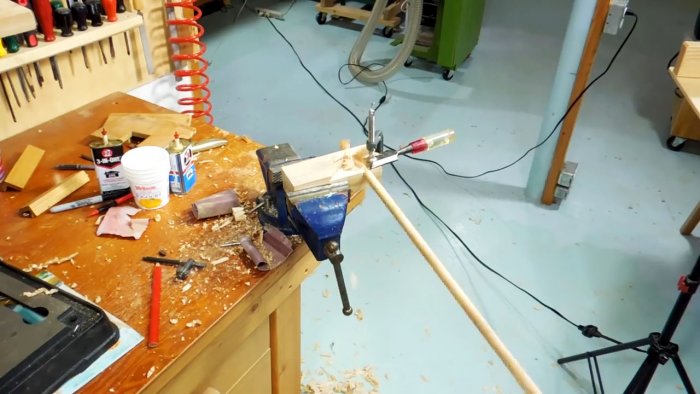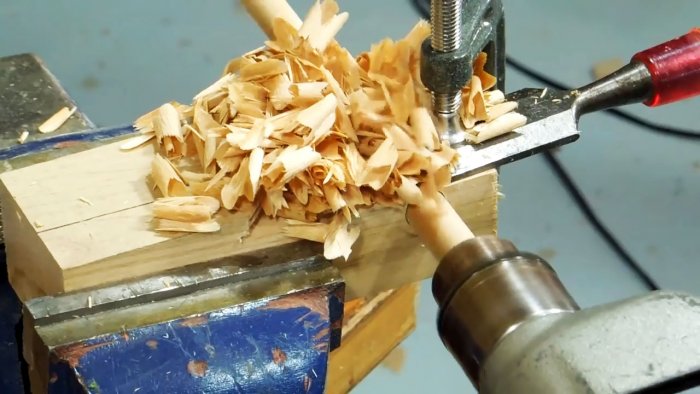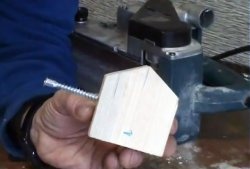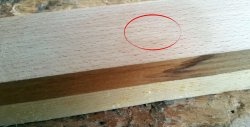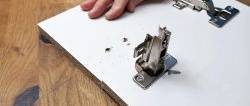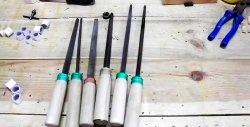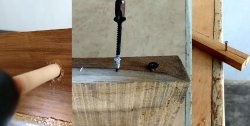How to make a device for making dowels
Dowels are often used to connect various wooden structures; this is a universal and effective carpentry technique. But it is not always possible to buy them, and to make them yourself you need to have a lathe - expensive special equipment. There is a simple device with which the problem with dowels is solved forever.
The device itself is made from a small piece of timber, preferably maple; the wood has great strength and at the same time a low coefficient of friction, which makes it easier for the workpiece to slide during rotation. Turning is done with a chisel, the workpiece is rotated with a drill. For manufacturing, you should have drills with a diameter of 10 mm and 12 and electric sharpeners for a chisel. If they are not there, then you can fine-tune the tool manually.
Dowels are made from wooden blanks. First, use a lathe to cut a square with a side 1–2 mm larger than the diameter of the dowel, then carefully remove its edges.
If possible, smooth out the corners using a bench router.In our case, the diameter of the finished dowels is 10 mm, respectively, the side of the square is 12 mm. The output is workpieces with a cross-section close to circular.
The device has several holes, each of which allows the production of dowels of a certain diameter. For each type of dowel, a hole is made with two diameters - the larger one corresponds to the size of the workpiece (in our case, 12 mm) and the smaller one, corresponding to the diameter of the dowel (in our case, 10 mm).
Drill a hole with a diameter of 12 mm to a depth of approximately 2/3 of the width of the block. To control the depth, install a limiter on the machine.
Place a 10mm diameter drill bit into the chuck and drill the hole all the way through.
Make a flat area to place the chisel. Part of the strip is removed along the entire length of the hole with a diameter of 12 to install the chisel. Using a caliper, measure the distance of the hole from the edge of the workpiece and, taking this parameter into account, adjust the circular saw.
Carefully cut the saw into the workpiece, the length of the cut should not reach the area with a smaller diameter. This hole must be solid and hold the workpiece around its entire circumference.
Check the results of sawing, remove the excess piece of wood with a chisel.
If during cutting it was not possible to maintain the recommended accuracy and the smaller hole is also affected, then the device should not be thrown away, it will work, only the diameter of the dowel will decrease slightly. For carpentry this is not critical.
Only a perfectly sharp chisel can sharpen wood. Sharpen it carefully on a special sharpener. Then use GOI paste to bring it to perfection.
Use a clamp to secure the chisel to the fixture and manually rotate the workpiece several times. Check depth of cut and rotation force. Adjust cutting parameters if necessary.If they need to be enlarged, then use a compass to deepen the area a little.
If the chisel has dropped very low, then raise it with various supports. You can use plain paper.
Use a clamp to fix the position of the chisel, clamp the device in a vice and you can start making dowels.
The workpieces are clamped into a drill, cutting modes (revolutions, feed and depth) are determined experimentally.
Most chucks are designed for a maximum drill diameter of 10 mm; workpiece Ø 12 mm is no longer included. To eliminate the problem, grind off 2-3 cm of the workpiece by hand and then clamp it into the drill. It is recommended to prepare several devices, which will make it possible not only to make dowels of various diameters, but also to use beautiful round elements for decorative purposes.
What to prepare
The device itself is made from a small piece of timber, preferably maple; the wood has great strength and at the same time a low coefficient of friction, which makes it easier for the workpiece to slide during rotation. Turning is done with a chisel, the workpiece is rotated with a drill. For manufacturing, you should have drills with a diameter of 10 mm and 12 and electric sharpeners for a chisel. If they are not there, then you can fine-tune the tool manually.
Fixture manufacturing process
Dowels are made from wooden blanks. First, use a lathe to cut a square with a side 1–2 mm larger than the diameter of the dowel, then carefully remove its edges.
If possible, smooth out the corners using a bench router.In our case, the diameter of the finished dowels is 10 mm, respectively, the side of the square is 12 mm. The output is workpieces with a cross-section close to circular.
The device has several holes, each of which allows the production of dowels of a certain diameter. For each type of dowel, a hole is made with two diameters - the larger one corresponds to the size of the workpiece (in our case, 12 mm) and the smaller one, corresponding to the diameter of the dowel (in our case, 10 mm).
Drill a hole with a diameter of 12 mm to a depth of approximately 2/3 of the width of the block. To control the depth, install a limiter on the machine.
Place a 10mm diameter drill bit into the chuck and drill the hole all the way through.
Make a flat area to place the chisel. Part of the strip is removed along the entire length of the hole with a diameter of 12 to install the chisel. Using a caliper, measure the distance of the hole from the edge of the workpiece and, taking this parameter into account, adjust the circular saw.
Carefully cut the saw into the workpiece, the length of the cut should not reach the area with a smaller diameter. This hole must be solid and hold the workpiece around its entire circumference.
Check the results of sawing, remove the excess piece of wood with a chisel.
If during cutting it was not possible to maintain the recommended accuracy and the smaller hole is also affected, then the device should not be thrown away, it will work, only the diameter of the dowel will decrease slightly. For carpentry this is not critical.
Only a perfectly sharp chisel can sharpen wood. Sharpen it carefully on a special sharpener. Then use GOI paste to bring it to perfection.
Use a clamp to secure the chisel to the fixture and manually rotate the workpiece several times. Check depth of cut and rotation force. Adjust cutting parameters if necessary.If they need to be enlarged, then use a compass to deepen the area a little.
If the chisel has dropped very low, then raise it with various supports. You can use plain paper.
Use a clamp to fix the position of the chisel, clamp the device in a vice and you can start making dowels.
The workpieces are clamped into a drill, cutting modes (revolutions, feed and depth) are determined experimentally.
Conclusion
Most chucks are designed for a maximum drill diameter of 10 mm; workpiece Ø 12 mm is no longer included. To eliminate the problem, grind off 2-3 cm of the workpiece by hand and then clamp it into the drill. It is recommended to prepare several devices, which will make it possible not only to make dowels of various diameters, but also to use beautiful round elements for decorative purposes.
Watch the video
Similar master classes
Particularly interesting
Comments (1)

